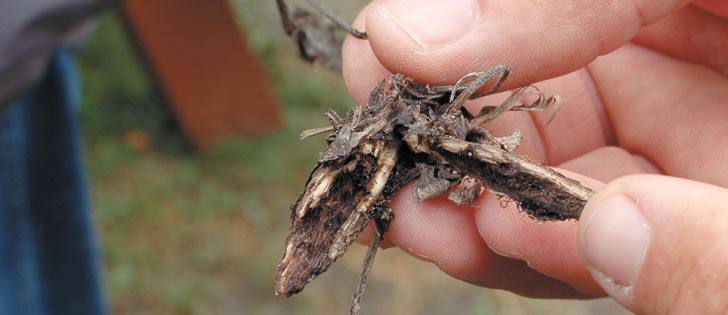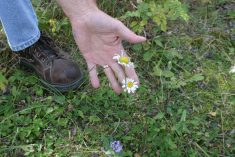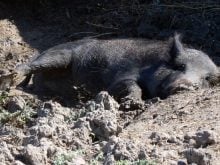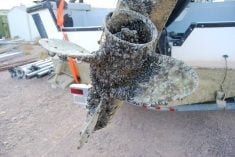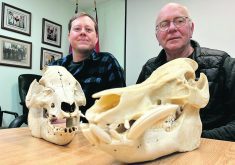KIMBALL PARK, Alta. — Hounds-tongue? What houndstongue?
A search of this park, once rife with the invasive weed, turned up few samples. Those that were found bore evidence of damage from an insect specifically introduced to eat that particular weed.
It was testament to a success story in weed biocontrol, a project spearheaded by Rosemarie De Clerck-Floate, an Agriculture Canada research scientist based in Lethbridge.
She described the project Aug. 10 to about 150 participants on an Alberta and Montana tour of water and weed sites.
Read Also

Farming Smarter receives financial boost from Alberta government for potato research
Farming Smarter near Lethbridge got a boost to its research equipment, thanks to the Alberta government’s increase in funding for research associations.
“This is our baby,” she said, showing an enlarged photo of Mogulones crucifer, a flying weevil that finds houndstongue especially delicious.
Houndstongue, an invasive weed in the borage family of plants, is native to Europe. Once in Canada, it became a particular problem in the British Columbia Interior, where it took over forested rangeland in the Kootenays, Okanagan and Nicola Valley, said De Clerck-Floate.
It produces burr-like nutlets that easily hitchhike on animals and clothing.
The weevil introduced to eat houndstongue also came from Europe and was released in Canada after years of testing to ensure it didn’t also eat and kill native species or other plants.
“That’s the first question anyone asks,” said De Clerck-Floate. “What are these bugs going to feed on once the weed is gone?”
Nine years of testing showed crucifer had specific tastes, and it was approved for release in both Canada and the U.S. in 1997.
Within two years, the weevil had drastically reduced hounds-tongue populations at B.C. re-lease sites.
Within three years, “that was it. The patch was kaput. There were just a few straggly plants left and a few insects on those plants.
“That’s a perfect example of a successful biocontrol insect, is that you’re not eradicating the weed. You’re bringing it down to a low level … below a threshold that is environmentally damaging or economically damaging.”
However, the story has a wrinkle, said De Clerck-Floate. Shortly after the weevil’s approval for release, the U.S. added some native borages to its list of endangered species.
Then it declared Mogulones crucifer to be a pest. As a result, it is not used as a biocontrol agent across the international boundary, although the weevils are known to have spread there.
“Neither insects or weeds respect borders,” said De Clerck-Floate. “But it’s frustrating. Houndstongue is a real problem south of the border. To us, it looks like a lot of the non-targets (borage species) we’ve looked at are safe (from the weevil.)”
She said tests have shown the weevil does not develop on Canada’s single at-risk borage species.
“If you don’t have houndstongue and if you release them on the non target and there’s no houndstongue around, they go flying off in search of houndstongue. They just skip right over the non targets.”
De Clerck-Floate said that in April, a panel of experts reviewed the possibility of releasing crucifer in the U.S.
“They have signalled that they’d be willing to entertain a new look at the petitions. It’s a crack that wasn’t there before.”
Work on crucifer and hounds-tongue is finished as far as De Clerck-Floate’s work is concerned. She has moved on to explore biological controls for yellow toadflax and various species of hawkweed.
Those who see houndstongue and wonder if crucifer is busy dining on it can look for smooth-edged, oval holes in leaf petioles.
“Look for that. There’s nothing else that makes that sort of feeding damage. If you see that, you know you have the houndstongue agent, Mogulones crucifer.”




